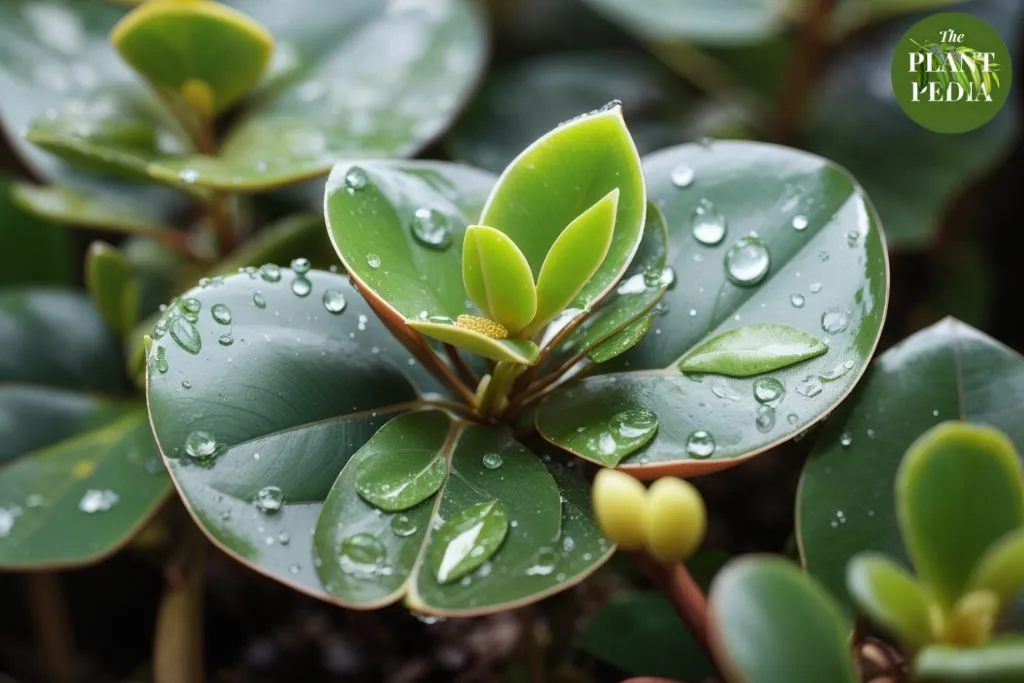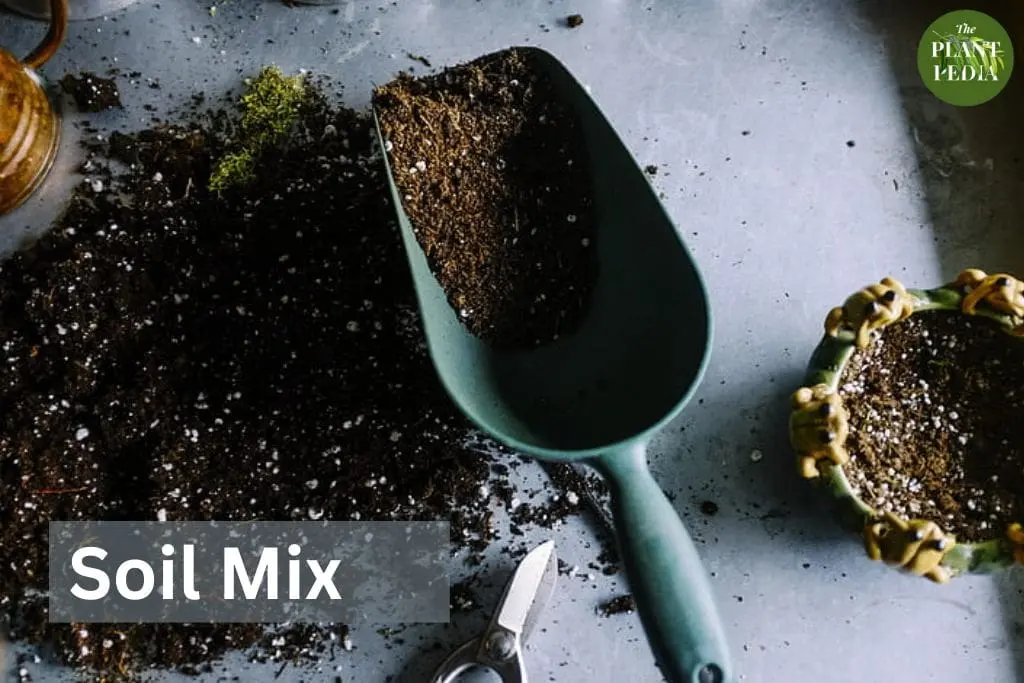The Peperomia obtusifolia, commonly known as the baby rubber plant or American rubber plant, is a popular choice among houseplant enthusiasts.
Its attractive, thick, succulent-like leaves and easy care requirements make it a favorite for both beginners and experienced plant lovers.
However, one critical aspect of successfully caring for Peperomia obtusifolia is getting its watering regimen just right.
In this comprehensive guide, we will delve deep into the world of Peperomia obtusifolia watering, exploring every aspect to ensure your plant thrives.
We’ll cover topics such as understanding its natural habitat, the signs of overwatering and underwatering, the best watering practices, and tips for maintaining optimal humidity.
By the end of this article, you’ll be equipped with the knowledge and confidence to keep your Peperomia obtusifolia healthy and vibrant.
Understanding Peperomia Obtusifolia’s Natural Habitat
Before we dive into the specifics of watering, it’s essential to understand the Peperomia obtusifolia’s natural habitat.
This knowledge will provide insights into its water requirements and help you recreate those conditions at home.
Peperomia obtusifolia is native to regions of South America, specifically Brazil and Venezuela.
In its natural habitat, this plant typically grows as an epiphyte, meaning it attaches itself to trees or rocks rather than rooting in the ground. This adaptation is crucial to understanding its watering needs.
Epiphytic plants like Peperomia obtusifolia have evolved to thrive in conditions where water is often scarce.
They have developed mechanisms to store water in their fleshy leaves and stems, allowing them to endure periods of drought.
This natural behavior is a key factor in determining how to properly water your Peperomia obtusifolia.
Read: Peperomia Obtusifolia Variegata: Everything About This Beauty.

Signs of Overwatering and Underwatering
To be an effective Peperomia obtusifolia caretaker, you must be able to recognize the signs of overwatering and underwatering.
These signs can vary depending on factors such as light, temperature, and the plant’s individual health, but some common indicators include:
Signs of Overwatering:
1. Yellowing or Drooping Leaves:
When you overwater your Peperomia obtusifolia, one of the most common signs you’ll notice is the yellowing and drooping of its leaves.
The excess moisture in the soil can lead to a lack of oxygen in the root zone, inhibiting the plant’s ability to take up nutrients. As a result, the leaves begin to yellow and lose their turgidity, causing them to droop.
To differentiate this from underwatering, observe the texture of the leaves. Overwatered leaves may appear limp but still feel soft to the touch, whereas underwatered leaves often become crispy and brittle.
2. Leaf Drop:
Overwatering can cause your Peperomia obtusifolia to shed healthy leaves prematurely.
This is a defensive mechanism the plant employs to conserve energy and resources when it senses that the root system is waterlogged.
If you notice a sudden drop in leaves, especially if they are green and healthy, it’s a strong indication that you need to adjust your watering practices to prevent further stress on the plant.
3. Mold or Fungus:
Excessive moisture in the soil can create a favorable environment for mold and fungus growth.
If you see white or green mold forming on the soil surface or even on the plant’s stems and leaves, it’s a clear sign of overwatering.
This not only affects the plant’s aesthetic appeal but can also harm its overall health.
To address this issue, reduce watering and improve air circulation around the plant. You can also consider repotting your Peperomia obtusifolia in fresh, well-draining soil to eliminate the fungal presence.
4. Sluggish Growth:
Overwatering can inhibit the growth of your Peperomia obtusifolia. The excess moisture in the root zone can lead to nutrient deficiencies as the plant’s roots struggle to take up essential elements.
As a result, you may notice slower growth or a stunted appearance in your plant.
To remedy this, allow the soil to dry out between waterings and ensure that your pot has proper drainage.
You may also consider adding a balanced, water-soluble fertilizer during the growing season to help your plant recover its vigor.
Signs of Underwatering:
1. Wilting and Drooping:
Underwatered Peperomia obtusifolia will often exhibit wilting and drooping leaves.
This happens because insufficient moisture in the soil prevents the plant from maintaining turgidity—the natural rigidity and fullness of its leaves.
When you notice your plant’s leaves appearing limp and droopy, it’s a clear indicator that it needs water.
2. Crispy or Brown Leaf Edges:
Another common sign of underwatering is the development of crispy or brown edges on the leaves.
This occurs because the plant is unable to transport water to its extremities, causing the leaf edges to dry out and turn brown.
If you notice this browning primarily at the leaf margins, it’s a strong indication that your Peperomia obtusifolia is not receiving enough water.
3. Slow Growth:
Just as overwatering can slow down growth, underwatering can also result in sluggish or stunted growth in your Peperomia obtusifolia.
When the plant lacks the necessary moisture to carry out essential metabolic processes, it conserves energy by reducing its growth rate.
You may notice that your plant is not producing new leaves or stems as quickly as it should.
4. Soil Dryness:
One of the most straightforward signs of underwatering is dry soil. If you insert your finger into the soil up to your first knuckle and find that it’s consistently dry, your Peperomia obtusifolia is not receiving enough water.
In some cases, the soil may even pull away from the sides of the pot, indicating severe dehydration.
5. Leaf Loss:
Prolonged underwatering can lead to leaf loss in Peperomia obtusifolia. The plant will shed leaves to conserve moisture and redirect resources to the essential parts of the plant.
If you notice leaves falling off your plant, especially if they are dry and brittle, it’s a sign that immediate action is needed to address the watering issue.
6. Leaf Curling:
Another less common but still notable sign of underwatering is leaf curling.
As the plant loses moisture, it tries to reduce the surface area exposed to the environment, which can result in the leaves curling inward or upward. This is the plant’s way of minimizing water loss through transpiration.
To remedy underwatering, adjust your watering routine to ensure your Peperomia obtusifolia receives adequate moisture.
Water deeply when the top inch or two of soil feels dry, and be consistent in your care. Remember that while Peperomia obtusifolia is drought-tolerant, it still requires regular hydration to thrive.
Best Watering Practices for Peperomia Obtusifolia
Choose the Right Pot and Soil:

Selecting the right pot and soil is fundamental to proper watering. A well-draining pot with drainage holes is crucial because it prevents water from pooling at the bottom, reducing the risk of root rot.
The choice of potting mix matters too. Peperomia obtusifolia thrives in a well-draining, peat-based potting mix. This mix allows excess water to escape easily, preventing waterlogged soil.
Water Thoroughly but Infrequently:
Achieving the right balance between deep watering and infrequent watering is key. When you water, do so thoroughly until water starts draining from the bottom of the pot.
This ensures that water penetrates deep into the root zone, where your Peperomia obtusifolia can access it.
However, it’s equally important to allow the top inch or two of the soil to dry out before watering again. This mimics the plant’s natural environment and prevents overwatering.
Use the “Finger Test”:
The “finger test” is a simple yet effective way to determine when your Peperomia obtusifolia needs water.
Insert your finger into the soil up to your first knuckle and check the moisture level. If it feels dry at that depth, it’s time to water.
If the soil still feels moist, wait a few more days before checking again. This method takes into account the plant’s specific needs and helps avoid unnecessary watering.
Avoid Watering on a Schedule:
Unlike some plants that benefit from a fixed watering schedule, Peperomia obtusifolia prefers a more flexible approach.
Its watering needs can vary with factors like temperature, light, and growth rate. During the active growing season (spring and summer), you may need to water more frequently.
In contrast, during the plant’s winter dormancy, you should reduce watering significantly, as it requires less moisture.
Opt for Bottom Watering:
Bottom watering is an effective way to ensure your Peperomia obtusifolia receives the right amount of moisture without risking overwatering.
To do this, place the pot in a shallow tray of water and allow the soil to soak up the water from the bottom.
Once the top of the soil is moist, remove the pot from the tray to prevent waterlogging. Bottom watering also helps prevent fungal issues by keeping the foliage dry.
Remove Excess Water:
After watering, always check the saucer under the pot and empty it if there’s any standing water.
Allowing your plant to sit in water for extended periods can lead to root rot, so maintaining proper drainage is essential.
Adjust Watering in Winter:
During the colder months when Peperomia obtusifolia enters a period of dormancy, its water requirements decrease significantly.
The reduced light and cooler temperatures slow down its growth, and the plant needs less moisture. Be sure to adjust your watering routine accordingly to avoid overwatering during this period.
The “finger test” remains an excellent tool to gauge when to water even in winter.
By following these best watering practices and paying close attention to your Peperomia obtusifolia’s specific needs, you’ll be well on your way to nurturing a healthy and thriving plant.
Remember that consistency and patience are key when caring for houseplants, and fine-tuning your watering routine is part of the rewarding journey of plant parenthood.
Keep In Mind:
- The frequency of watering will depend on the specific conditions of your plant, such as the light it receives, the temperature of the air, and the type of potting mix you use. It is important to check the soil moisture regularly and water when the top inch or two of the soil is dry.
- It is better to underwater than to overwater Peperomia obtusifolia. Overwatering can lead to root rot, which can kill the plant.
- If you are not sure whether your plant is being watered correctly, it is always best to err on the side of caution and water less often.
Humidity and Peperomia Obtusifolia
Humidity plays a significant role in the overall health and well-being of your Peperomia obtusifolia. While this plant can adapt to lower humidity levels, it will thrive when provided with higher humidity.
Let’s explore how humidity impacts Peperomia obtusifolia and some practical tips for maintaining optimal humidity levels:
1. Natural Habitat and Humidity:
Peperomia obtusifolia is native to regions of South America, where it grows in tropical and subtropical climates.
In its natural habitat, the humidity levels are relatively high, especially in the rainforests of Brazil and Venezuela. This native environment provides important insights into the plant’s humidity preferences.
2. Benefits of Higher Humidity:
Peperomia obtusifolia benefits from higher humidity levels for several reasons:
- Enhanced Transpiration: Higher humidity encourages the plant to engage in transpiration, the process of releasing moisture through its leaves. This helps the plant take up nutrients and maintain turgidity (firmness of leaves).
- Foliage Health: Adequate humidity prevents the leaves from drying out, reducing the likelihood of crispy or brown leaf edges, which can occur in dry environments.
- Preventing Stress: Maintaining suitable humidity levels reduces stress on the plant, making it more resilient to environmental changes.
3. Practical Tips for Maintaining Humidity:
Here are some practical steps you can take to maintain optimal humidity for your Peperomia obtusifolia:
- Group Plants Together: Placing your Peperomia obtusifolia near other houseplants can create a microenvironment with higher humidity levels. As plants release moisture through transpiration, the collective effect can raise humidity in their vicinity.
- Use a Humidity Tray: Set up a humidity tray by placing a shallow tray filled with water and pebbles near your plant. As the water evaporates, it increases the humidity in the immediate area around your Peperomia obtusifolia.
- Mist the Leaves: Lightly misting the leaves with water can provide a temporary boost in humidity. However, be cautious not to overdo it, as excessive moisture on the leaves can lead to fungal issues. Aim for fine misting rather than drenching the plant.
- Humidifier: If you have multiple humidity-loving plants or live in a particularly dry climate, consider using a humidifier to maintain consistent moisture levels in the air. This is especially helpful during the winter when indoor heating systems can dry out the air.
- Avoid Drafts: Keep your Peperomia obtusifolia away from drafts caused by heating or air conditioning, as these can reduce humidity levels around the plant. Drafts can also stress the plant and lead to leaf damage.
Remember that while higher humidity is beneficial, it should not come at the expense of overwatering.
Always prioritize proper watering practices, and use humidity-enhancing techniques as a supplemental measure to create the ideal environment for your Peperomia obtusifolia to thrive.
By paying attention to its specific needs, you can ensure that your plant remains healthy, lush, and vibrant.
My Personal Tips for Watering Peperomia Obtusifolia:
- Use a moisture meter to check the soil moisture. This can be a helpful tool for ensuring that you are watering your plant correctly.
- Water your plant in the morning so that the leaves have time to dry before nightfall. This will help to prevent the development of mold or fungus.
- If your plant is in a pot with no drainage holes, be sure to water it carefully so that the water does not accumulate at the bottom of the pot.
- Fertilize your plant regularly during the growing season to help promote healthy growth.
I hope this helps!
Common Watering Questions and Concerns
Now that we’ve covered the fundamentals of Peperomia obtusifolia watering, let’s address some common questions and concerns that plant enthusiasts often have.
Can I use tap water for my Peperomia obtusifolia?
In most cases, tap water is suitable for Peperomia obtusifolia. However, it’s essential to consider the quality of your tap water.
If your water is heavily chlorinated or contains a high mineral content, it’s better to use filtered or distilled water. You can also leave tap water out overnight to allow chlorine to dissipate before using it on your plants.
Should I fertilize when I water my Peperomia obtusifolia?
Fertilizing and watering are two separate processes. While you can fertilize your Peperomia obtusifolia during the growing season (spring and summer), it’s crucial not to fertilize a dry plant.
Always water your plant first, and then wait a few days before applying a balanced, water-soluble fertilizer diluted to half strength.
How do I revive an overwatered Peperomia obtusifolia?
If you suspect that your Peperomia obtusifolia has been overwatered, take immediate action to prevent further damage. Remove the plant from its pot and inspect the roots for signs of rot.
Trim away any rotting or mushy roots and let the plant air-dry for a day or two. Repot it in fresh, well-draining soil and adjust your watering practices to avoid future overwatering.
Can I use a self-watering pot for my Peperomia obtusifolia?
Self-watering pots can be convenient, but they are not always the best choice for Peperomia obtusifolia. These pots can increase the risk of overwatering, as they keep the soil consistently moist.
If you decide to use a self-watering pot, be sure to monitor the moisture level carefully and adjust the watering accordingly.
How can I tell if my Peperomia obtusifolia is getting enough water during the winter dormancy period?
During the winter dormancy period, it’s normal for your Peperomia obtusifolia to require less water. To ensure you’re not overwatering, follow the “finger test” mentioned earlier.
If the top inch or two of soil remains consistently dry, it’s a sign that the plant is not actively taking up moisture, and you should reduce your watering frequency.
Conclusion
Watering your Peperomia obtusifolia correctly is essential for its overall health and vitality. By understanding its natural habitat, recognizing signs of overwatering and underwatering, and implementing best watering practices, you can create the ideal conditions for your plant to thrive.
Remember that successful plant care is a learning process, and it may take some time to fine-tune your watering routine.
Pay close attention to your Peperomia obtusifolia’s behavior and adjust your care accordingly.
With patience and dedication, you can enjoy the beauty of this delightful houseplant for years to come.
